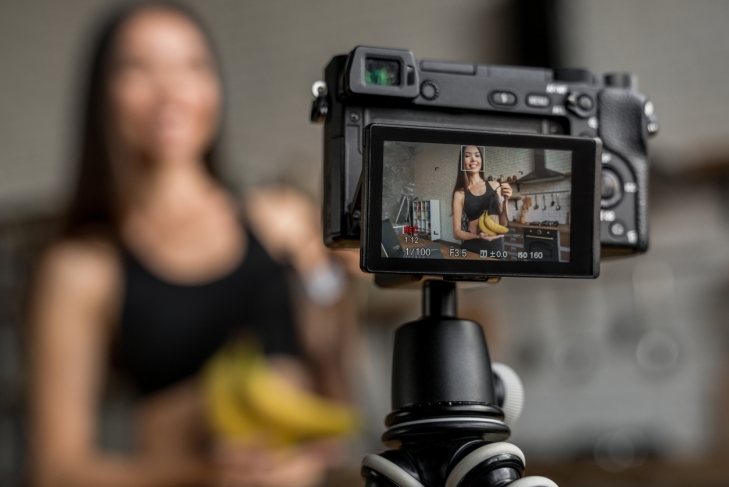A Singapore-based influencer marketing platform is tasked with the equivalent of trying to “sell bell-bottoms to Millennials”
口碑, or kǒu bēi, means ‘word-of-mouth’ in Chinese, and it is usually used in the context of a person’s or business’s reputation. It is also the naming inspiration of Kobe, a Singapore-based influencer marketing platform.
Set up in 2016 by digital marketing veteran Evangeline Leong, and Cha Lin, who had several years in the influencer marketing industry, the pair teamed up to address an existing market gap: influencer marketing for small and medium enterprises (SMEs). By 2019, Kobe had over 5,000 influencers on its platforms, and the company is building its AI capabilities to identify the most appropriate influencer for any given campaign and client.
In May 2019, Jia Jia herbal tea hired Kobe to make it the ‘in’ thing amongst youngsters enamoured with bubble tea. Leong describes it as trying to “sell bell-bottoms to Millennials”.
EXERTING THE RIGHT INFLUENCE(R)
Jia Jia (a ready-to-drink herbal tea manufacturer in Singapore) had approached Kobe to work on developing an influencer marketing campaign for its products. The Jia Jia herbal tea was a traditional drink made from green tea leaves and a combination of eleven natural herbs.
The existing consumer base of the Jia Jia tea products numbered around 100,000 in Singapore, and the goal was to double the consumer base by the end of the year 2019. The products experience peak sales during the Chinese New Year period, when consumers liked to gift Jia Jia herbal tea celebration packs to family and friends during the festive season.
Many major beverage brands have successfully incorporated influencer marketing as part of their marketing strategy. Coca-Cola, for example, reached out to its Belgian consumers by collaborating with 12 Belgian influencers on Instagram. One of the influencers for the Coca-Cola Belgium campaign was Yannick Merckx, a traveller with nearly 48,000 followers on Instagram. In a post of his travels in Mexico, he posted a picture of himself in front of a wall of a local cyber café with a painted ad of Coca-Cola. He added further details to the post and mentioned, “A local family even told us that they drink Coca-Cola during breakfast – “The three litre bottle is always on the table”.
DETERMINING SUCCESS
Two issues determine what makes a successful campaign. Finding the ‘right’ influencer was key. Companies could have blind spots in terms of who they wanted to market to. “For example, Pepsi may rule out Coke fans as target audience”, Leong points out. As different influencers appeal to different market segments, distinct strategies for each influencer type was required to ensure that they contributed to a campaign.
The second and perhaps more important element was determining the return on investment (ROI) and managing client expectations. Surveys had shown that 76 percent of marketers indicated the measure of ROI as a major challenge for influencer marketing.
Kobe relies on KPI’s as a measurement tool for its campaigns. Setting bespoke KPIs and a cost per engagement pricing help the firm counteract this challenge to an extent. Determining KPIs upfront and monitoring the campaign closely also ensure that the campaign produces the intended results, and help identify future marketing patterns. KPIs could include audience reach, impressions, engagement (comments, likes, shares), quality of content, cost per lead (how much each lead and customer was costing in terms of advertising budget), etc.
During the planning phase, influencers would often come up with their own preferences as to how the programme should be executed. Content artists could have their own ideas. Clients have their own set of beliefs as well. The team at Kobe coordinate the development of content for each post to ensure that it is carefully developed.
“Some clients ask what volume of products I can sell through this campaign,” Leong elaborates. “We have to manage our client’s expectations and explain the objectives - influencer campaigns are meant for building conversations with customers; so the focus is on engagements rather than sales. If the influencer content is too sales oriented, storytelling will be lost in the process. Eventually, followers would stop following.”
HARD SELL? OR HARD TO SELL?
Over-exuberant expectations and sometimes unrealistic promises by unscrupulous practitioners contribute to perceptions of influencer marketing as being little more than paid content that does nothing for brands that bankroll it. To promote Jia Jia herbal tea, Leong and Cha had to make a few strategic decisions. They had to understand the herbal tea brand and its vision. They also had to understand the target consumers and their psychographics. Leong reiterated,
“We need to understand who they are trying to market to and why people don’t want to drink Jia Jia herbal tea. Addressing this right at the start allows us to predict potential feedback. It also helps us to do effective content direction, achieve the right pairing and get the right influencers.”
Could Leong make Jia Jia herbal tea the new trend in Singapore? Could she and her colleagues identify the right influencers for their campaign, in a market proliferated by tea drink products and the millennials' preferred bubble tea drink? What could be Kobe’s influencer marketing strategy for Jia Jia and the most appropriate social media platform for the campaign?
This is an adapted version of the SMU Case, "Kobe Influencer Marketing: Building Brand Awareness via Social Media". To see the full case, please click on the following link: https://cmp.smu.edu.sg/case/4236
Follow us on Twitter (@sgsmuperspectiv) or like us on Facebook (https://www.facebook.com/PerspectivesAtSMU)
Last updated on 31 Mar 2020.
This article is a repost from Perspectives@SMU
https://cmp.smu.edu.sg/article/can-influencer-marketing-make-herbal-tea-cool
